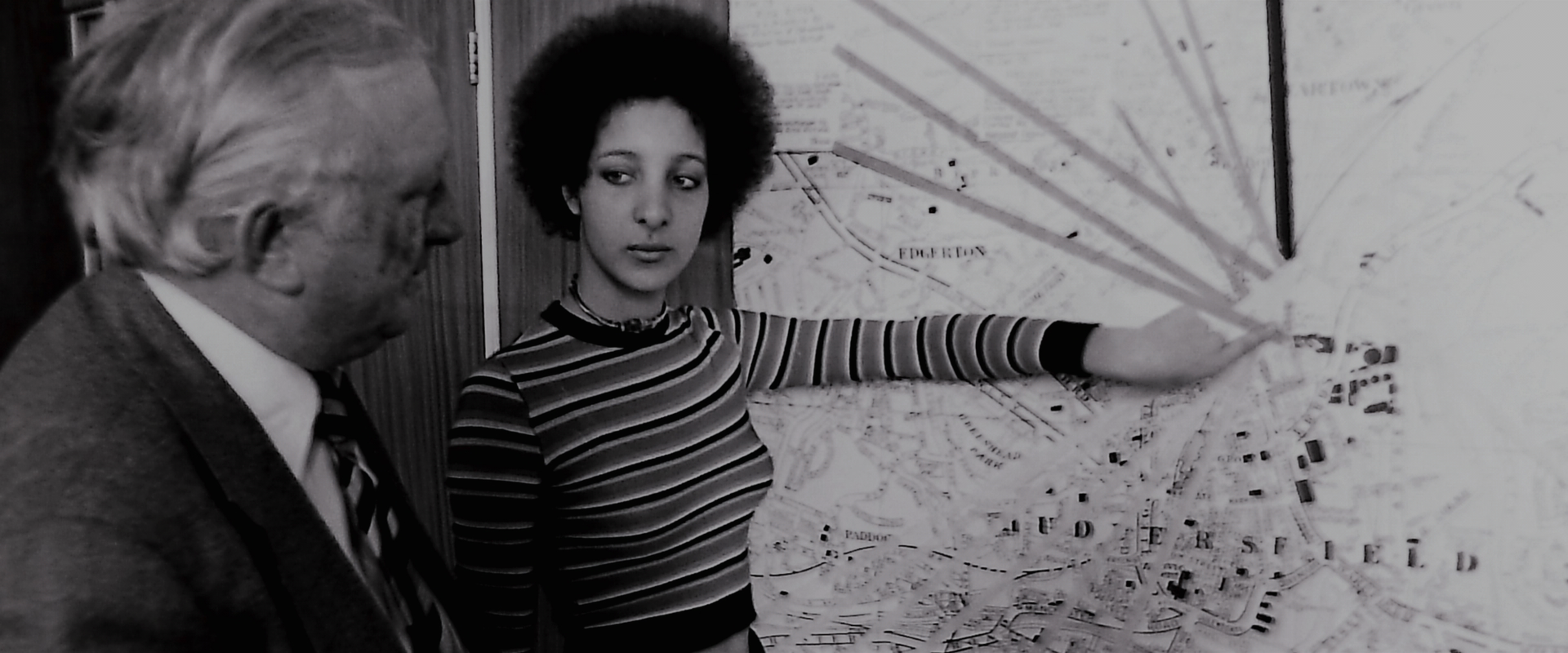Recent docuseries highlight the pitfalls and strengths of True Crime TV
'Murder on Middle Beach,' 'The Night Stalker' and 'The Ripper' offer an array of documentary styles.

Whether newspapers, periodicals, podcasts, or television, the popularity of true crime refuses to subside. Regardless of if the case is unknown and unsolved, or a notorious killer who was caught decades ago, the appetite to consume this kind of non-fiction story is vast. Whole networks are dedicated to this genre, but there is plenty of scheduling space on streamers looking to draw eyeballs and generate conversation. It is impossible to predict what will turn into the latest virtual water cooler TV moment (across any genre) and filmmaker style varies as much as the crimes covered — though one seeming unifying theme is a bungling investigation by law enforcement.
Debuting over consecutive months, HBO Max’s Murder on Middle Beach and Netflix’s The Ripper and The Night Stalker: Hunter for a Serial Killer share very little beyond their true crime category. One is a deeply intimate story that follows a single unsolved case, while Ripper and Night Stalker portray infamous serial killers from the last century. Murder on Middle Beach’s exploration of how one family has been torn apart, is obviously a very different scenario to two communities who were terrorized by one person over a prolonged period. Nevertheless, the arrival of these docuseries serves as a reminder of how powerful a true-crime narrative can be — as well as the sensational traps filmmakers often fall into that takes away from the victims they are trying to honor.
Voyeurism is baked into this type of storytelling, which often flattens the victims while mythologizing the killer. This might not be the filmmaker’s intention, but in looking to the why and how of a crime spree the focus lands on the perpetrator. One of writer Michelle McNamara’s strengths was that she never reduced those impacted to a statistic or a name on a long list. The all-consuming work McNamara did on the Golden State Killer — a name she coined in a Los Angeles magazine article in 2013 — resulted in the book I’ll Be Gone in the Dark. Finished posthumously, it was adapted into a documentary series that explored the case and McNamara’s dogged investigation (including interviews with her family and the survivors of these crimes). Airing on HBO over the summer, it is one of the best TV shows of 2020 that sets a new standard for true crime. Rather than centering the killer — who was caught and sentenced after McNamara’s untimely death — the six-part series avoids gruesome sensationalism that often plagues the trail of mayhem depiction.
Obsession is also at the heart of these stories that often places investigators and killers in tandem. McNamara’s tireless work tracking missing items the Golden State Killer stole to sifting through decades-old evidence is documented that runs parallel to blunders that are often due to interagency politics. The latter is a common thread between these documentaries and while the tone and style of how each is told differ, it is impossible to overlook this similarity. The number of victims impacts how the stories are covered but McNamara and I’ll Be Gone in the Dark director Liz Garbus prove that victims and survivors can (and should) have a point of view. McNamara is the protagonist threading between the past and present, but the spotlight rarely shifts from those whose lives were irrevocably changed by the perpetrator.
Following in these footsteps is Murder on Middle Beach filmmaker Madison Hamburg who has a unique perspective because he is also the murder victims’ son. Barbara Hamburg was killed in 2010 when Madison was 18 years old and the case remains unsolved. The opening credits are part Six Feet Under, part Hereditary miniatures with flickering archival family images that reflect the personal aspect of this journey. Madison records strained phone conversations with his estranged father (as well as the local police force), speaks in great depth with family members, and even revisits the crime scene to walk through the killer’s steps on that March morning. A conversation with the current owner of this home is one of several emotional moments that never appear staged or forced. Several theories stand and he cannot rule out some of his nearest relatives as the potential perpetrator. His ability to remain emotionally connected while not letting his feelings overwhelm the material is quite extraordinary, and he never loses sight of his mother.
Finding skeletons in Barbara’s closet, Madison doesn’t shy away from the criminal investigation into the “Gifting Tables” Ponzi scheme. But he is also doesn’t victim blame, which is often a true-crime pitfall to paint those who died as either innocent or culpable. Instead, he explores how his family came apart at the seams in light of this devastating event — and learned how to trust again. The final episode includes several gut-punch moments and while there is no succinct resolution (there is no Jinx style confession), life rarely gets wrapped up in a neat bow. As with I’ll Be Gone in the Dark, Madison Hamburg’s portrayal of his mother avoids turning her into an abstract entity.
The framing of the women who died during the Yorkshire Ripper’s reign of terror is not afforded the same consideration by the police and media when the crimes occurred more than 40 years ago. The Ripper weaves archival footage — including the police discussing the case — with present-day recollections from retired law enforcement, the family’s of victims, survivors, and members of the media that covered the case. Deep-rooted misogyny and a lack of responsibility are still apparent and the most enlightening speakers are the women who reported on the case. “The press and the police had inferred that this was a man who hated prostitutes. A description that implanted in your mind that if you were not that kind of woman, who had “many boyfriends” then you were fine,” explains journalist Christa Ackroyd (who worked for the Halifax Courier at the time of the murders). Ackroyd has already mentioned that male reporters were given hard-hitting news stories, whereas the women were left to cover fluff pieces like social events.
The latest updates, reviews and unmissable series to watch and more!
The Ripper is at its most potent when women like Ackroyd are discussing the precarious social-economic landscape of the mid to late ‘70s, coupled with the prejudice of this era. It is hard to watch this docuseries and not yell at the TV — whether at the rampant misogyny or the incompetence levels. One criticism that has been leveled at the series is the name, which Richard McCann (the son of 1975 victim Wilma McCann) told BBC Radio 2 “mythologizes him [Peter Sutcliffe] and almost makes him a larger than life character.” McCann did also remark that he didn’t believe that the documentary sensationalized the events.
The latter cannot be said about The Night Stalker, which finds it necessary to amp up the grisly factor with fake blood dripping crime scenes alongside the real photographs. The latter does the job of highlighting how violent Richard Ramirez was without these glossy additional interpretations of events. It is unnecessary to add this extra gory texture and director Tiller Russell’s re-enactments overshadow the talking-head moments with the investigators, survivors, and the countless relatives impacted by the summer crime spree. Ramirez recently featured as a fictionalized version in American Horror Story: 1984 and viewers might be mistaken for a moment that these retro-style re-enactments are deleted scenes from this over-the-top portrayal.
To get a viewer to tune in or press play on the first episode it makes sense to lead with a punchy title — after all, nicknames are given to these killers by the media and investigators to alert the public and sell newspapers. But the tabloid-style lurid details do not need to extend to the re-enactments. The Night Stalker does offer a fascinating snapshot into that violent summer in Los Angeles, but Ramirez’s crimes don’t need any additional help to emphasize the horror.
True crime is something viewers seemingly can’t get enough of and docuseries like Murder on Middle Beach and I’ll Be Gone in the Dark are a reminder of the shattered lives at the center and the voice given to those who cannot tell their own story.
Emma Fraser spends most of her time writing about TV, fashion, and costume design; Dana Scully is the reason she loves a pantsuit. Words can also be found at Vulture, Elle, Primetimer, Collider, Little White Lies, Observer, and Girls on Tops. Emma has a Master’s in Film and Television, started a (defunct) blog that mainly focused on Mad Men in 2010, and has been getting paid to write about TV since 2015. It goes back way further as she got her big start making observations in her diary about My So-Called Life’s Angela Chase (and her style) at 14.


